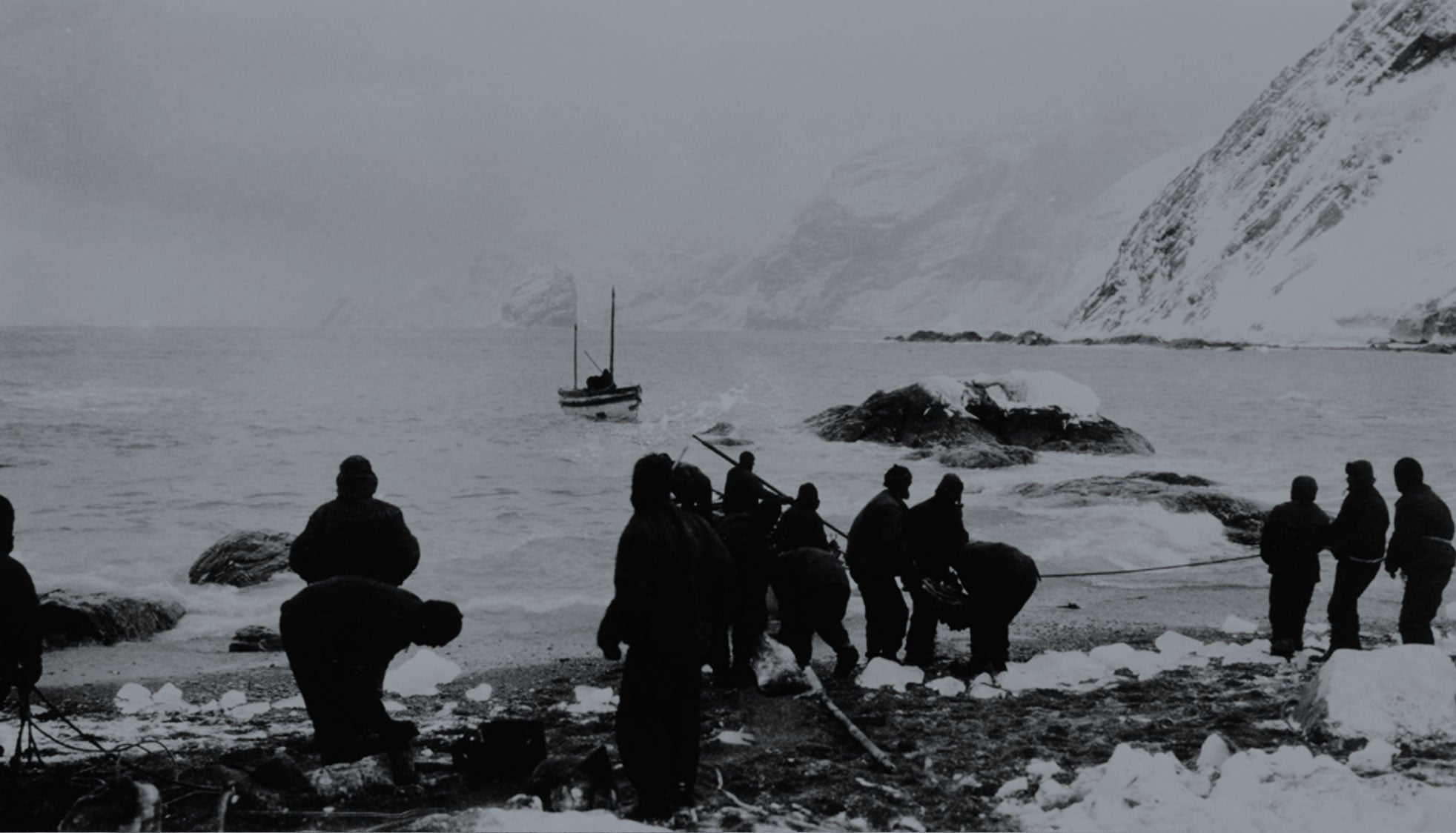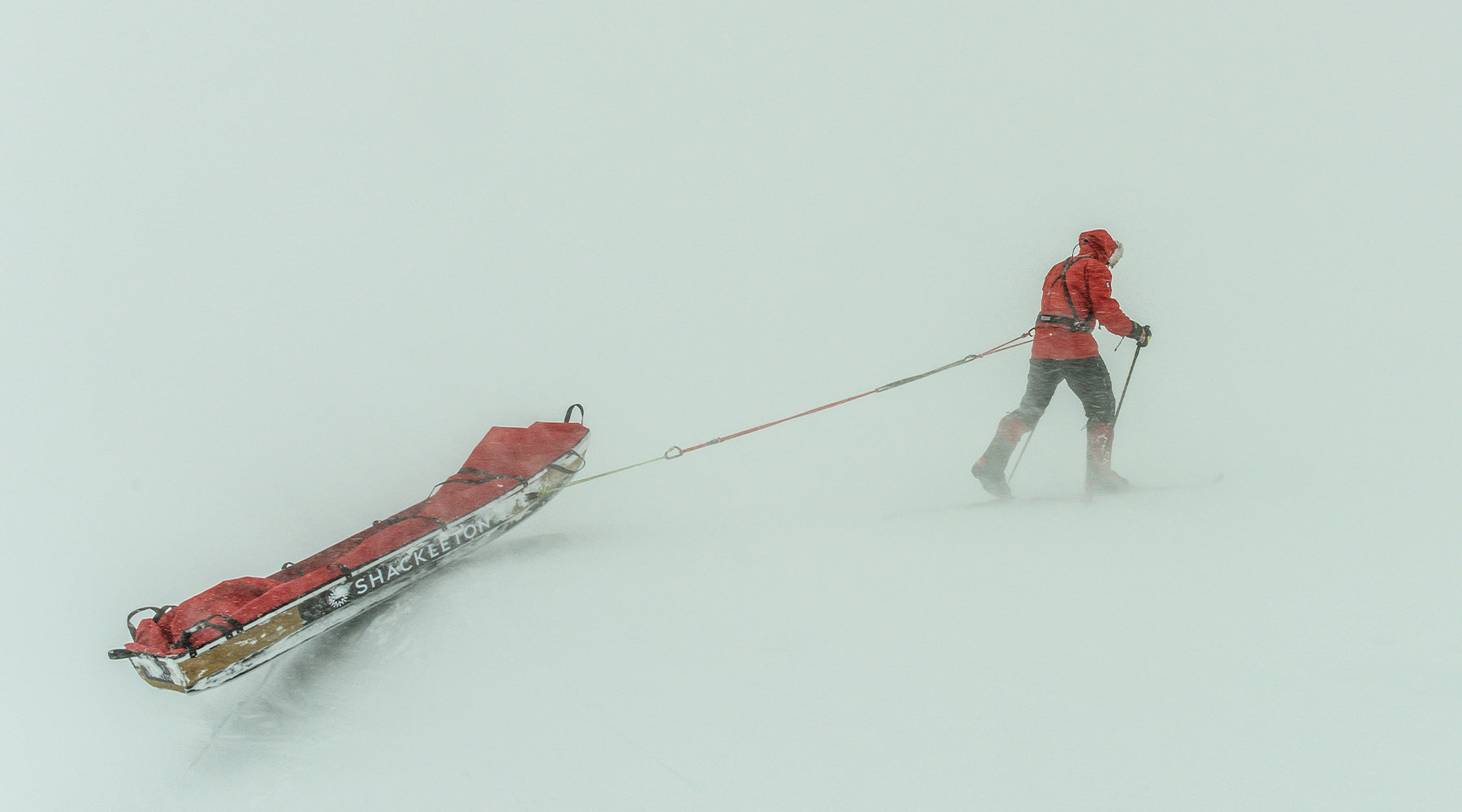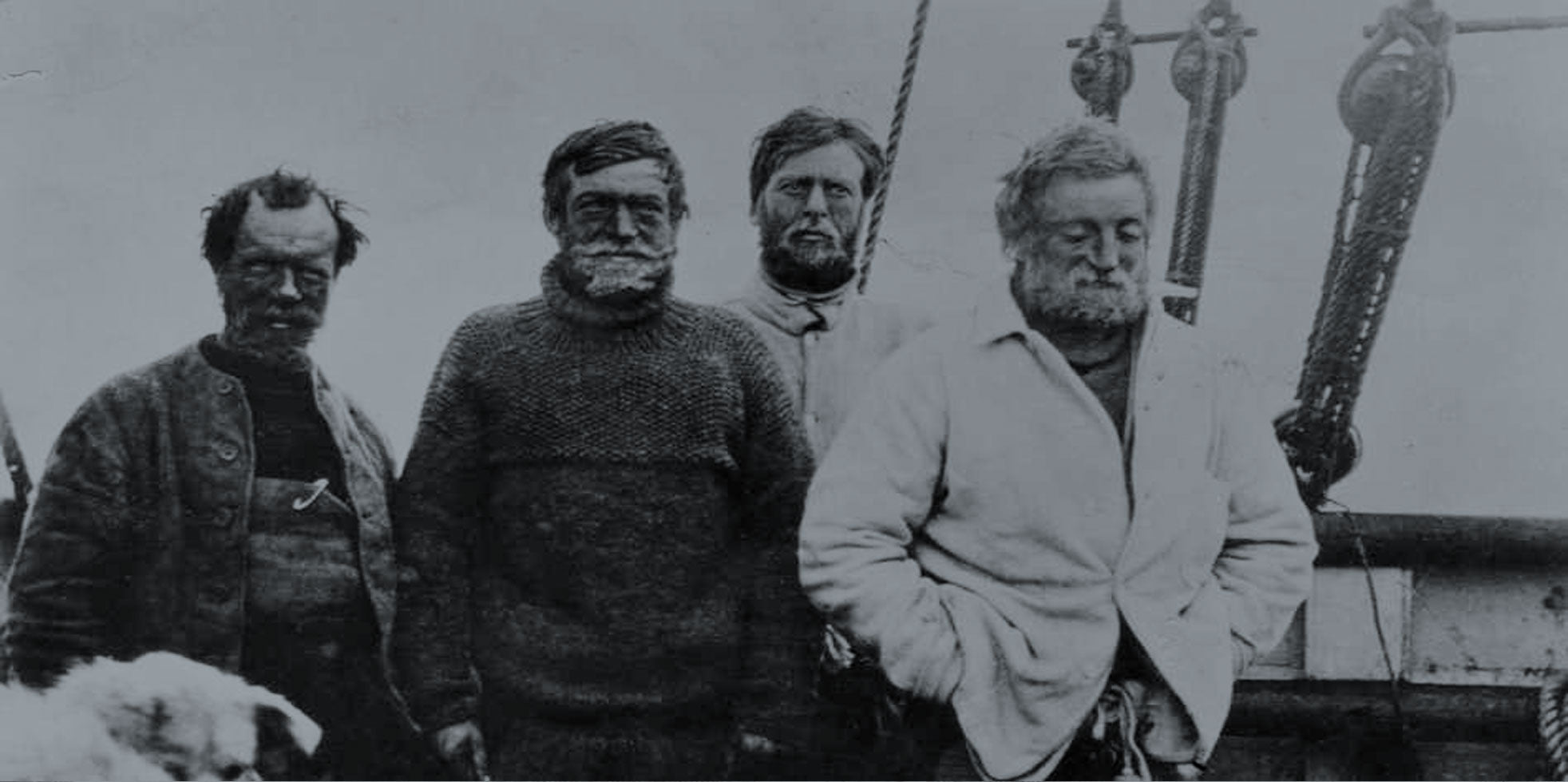
James Caird: Crossing The Southern Ocean
The remarkable journey of James Caird, the small open boat commanded by Ernest Shackleton to sail across the wild Southern Ocean in 1916, is among the greatest sea voyages ever recorded. By polar historian Michael Smith.
Nothing in history quite compares to James Caird’s epic voyage. The nearest equivalent is Captain William Bligh’s much acclaimed 4,000-mile journey in an open boat in 1789 after the mutiny on Bounty. However, Bligh sailed in the more temperate waters of the Pacific and picked up fresh food and water by island-hopping along the way. Such treats were not available to Shackleton’s men on James Caird.
The journey of James Caird was born out of desperation following the sinking of Shackleton’s ship, Endurance, in the ice-choked Weddell Sea. After spending over a year trapped on an ice-floe, the 28 men crammed into three small lifeboats and sailed to desolate Elephant Island, the nearest available landing place.
They were alone in thousands of square miles of hostile seas, without radio communications. At least a third of the men were too weak to travel further and nobody was coming to rescue them.
Shackleton’s courageous response was to sail James Caird, the largest of the lifeboats, across the Southern Ocean to South Georgia where he would find the whaling fleet. Shackleton took six hand-picked men for the 800-mile (1,200 km) voyage and left 22 behind on Elephant Island. The men’s lives were dependant on Shackleton’s ability to overcome overwhelming odds and survive the worst seas on earth.
Haunted by a fear that some of the castaways might not survive months on Elephant Island, Shackleton said “I shall feel like a murderer” if he did not return. “(Caird) is our only hope,” one man wrote as the little boat disappeared behind mountainous waves.
The boat, which measured 23 feet, was built on the Thames in 1914 on the instructions of Frank Worsley, the experienced captain of Endurance. The adept ship’s carpenter, “Chippy” McNish raised the gunwales by cannibalising planks from the two other lifeboats and his makeshift caulking was an unlikely mixture of artist’s paints, lamp wick and seal’s blood. Blankets were cut up to make bags for 1,500lbs of rocks for ballast. But Caird entered the hostile seas with a freeboard only 2ft 2 inches above the waterline.
Shackleton was in charge, though navigation was in the capable hands of Worsley. Alongside were the Polar veteran Tom Crean and three toughened seamen, Vincent, McCarthy and carpenter McNish.
It is a measure of Shackleton’s self-belief that, despite the very small chance of survival, he was a novice with sailing boats. Shackleton had spent most of his time at sea in engine-powered cargo ships. Shortly after sailing, he turned to Worsley and revealed: “Do you know, I know nothing about sailing.” Worsley thought he was joking but Shackleton grabbed his arm and insisted: “I’m telling you, I don’t.”
Although South Georgia lies to the north east of Elephant Island, the aim was to sail due north and pick up the powerful westerly currents of the Drake Passage, the fearsome seas lying between Antarctica and the tip of South America. The infamous Cape Horn rollers can climb to 40 feet and, unchecked by land in either direction, are propelled around the globe at up to 25 mph. Rogue waves have been known to reach 100 feet.
Wearing mostly woollen clothing – underwear, socks, jumpers and balaclavas – beneath cloth trousers, the main protection against the constant soakings were Burberry overalls and helmet-like head covering. While fairly warm, the clothing was not waterproof and men were permanently soaked to the skin. Their wet feet turned ghostly white and lost all feeling. Worsley called it an “ordeal by water”.
Shackleton’s calm leadership was vital during the voyage, dividing the party into two three-man teams and ensuring the men off watch took much needed rest. Meals and hot drinks were served regularly, though cooking was a hellish experience in the rolling seas and countless bristly hairs from the old and decaying reindeer sleeping bags invariably found their way into each plate or mug.
Dawn broke on one morning to find Caird sitting perilously low in the water and in danger of capsizing. To their horror, it was discovered that overnight sea spray had frozen on the craft and formed a threatening 12-inch coating of ice.
Despite the shrieking wind and heaving seas, the men crawled across the slippery canvas deck covering to chip away at the ice, clinging on with one hand and in constant fear of being thrown into the water. Three times the men risked their lives venturing out to hack at the ice and the relief was enormous when the boat slowly began to rise freely.
Shackleton was at the tiller soon after, when James Caird was struck by a “mighty upheaval” of the ocean when a gigantic wave, probably caused by the break-up of a large iceberg, struck and threw the vessel around like toy. All hands bailed frantically as water poured over the sides and afterwards no one quite understood how the Caird had survived.
Amid the turmoil of heavy seas, Worsley, the consummate navigator, took only four sightings with a sextant as he guided the Caird towards their goal. Finally, on May 8, the mountains of South Georgia were spotted through a break in the clouds. It was the fifteenth day at sea and food and water were close to running out.
But the brutal Antarctic climate launched a fresh onslaught as the boat neared the coast. A hurricane further delayed a landing for two days as the six men, exhausted and thirsty, struggled to locate a safe landing place.
Unfortunately, they were only able to land on the island’s southern slopes and not capable to taking the battered boat to the northern harbours where the whaling ships were moored. James Caird finally ran into King Haakon Bay as dusk was falling on May 10, 1916. Shackleton’s party had been at sea 17 days and it was almost 18 months since a fully-laden Endurance had first left South Georgia at the start of the expedition. Darkness fell moments later and in nearby waters a 500-tonne steamer, bound for South Georgia and engulfed in the storms, was lost with all hands.
Leaving three men with the Caird, Shackleton recovered enough to lead Tom Crean and Endurance’s captain, Frank Worsley, across South Georgia’s unmapped mountains and glaciers to the whaling stations. It was a trek of around 40 miles and Shackleton travelled light, dumping sleeping bags and a tent despite the constant threat from the severe weather.
They made the traverse in 36 hours without proper rest. The meagre rations were exhausted. Even today mountaineers are in awe of the feat. One who followed in the footsteps of Shackleton, Worsley and Crean a century later, admitted: “My estimation of these three men went up 1000 per cent.”
At Stromness, the hardened Norwegian seamen working in South Georgia’s whaling industry were astonished to hear Shackleton’s remarkable story of survival and were determined to salute the remarkable courage and endurance. When the whalers recovered Caird from King Haakon Bay, they would not allow Shackleton or his men to help carry the boat ashore as a mark of respect.
One by one, the whalers stepped forward to shake hands with Shackleton, Worsley and Crean. One sailor, who had spent a lifetime at sea, said he never heard of such a feat. He added: “These are men!”
But Shackleton was in no mood to celebrate, with 22 colleagues still marooned on Elephant Island, unsure if James Caird had survived the Southern Ocean.
Shackleton needed four attempts spread over four and half challenging months to break through the ice and reach the castaways. It was 128 days since James Caird’s departure. As he rowed ashore on August 30, 1916, an anxious Shackleton called out to see if all hands had survived. “We are all well, Boss,” they called back.
Shackleton quickly put the Imperial Trans-Antarctic Expedition behind him, serving briefly in the First World War and later lecturing extensively on his exploits. But his mind was always focussed on some distant icy horizon and his next expedition. He told his wife, Emily: “I am no good at anything but being away in the wilds…”
The James Caird returned to England in 1919. Following Shackletons’s death in 1922, the vessel was purchased by a friend, the wealthy businessman, John Quiller Rowett. Rowett gifted the boat to their old school, Dulwich College, where it remains on display.
Thanks to an ongoing collaboration between The Royal Geographical Society (with International Bureau of Geographers) and Salto Ulbeek Publishers in Belgium, the unique opportunity to purchase from the first ever collection of limited edition platinum palladium prints of ‘Endurance’ expedition is now available.



